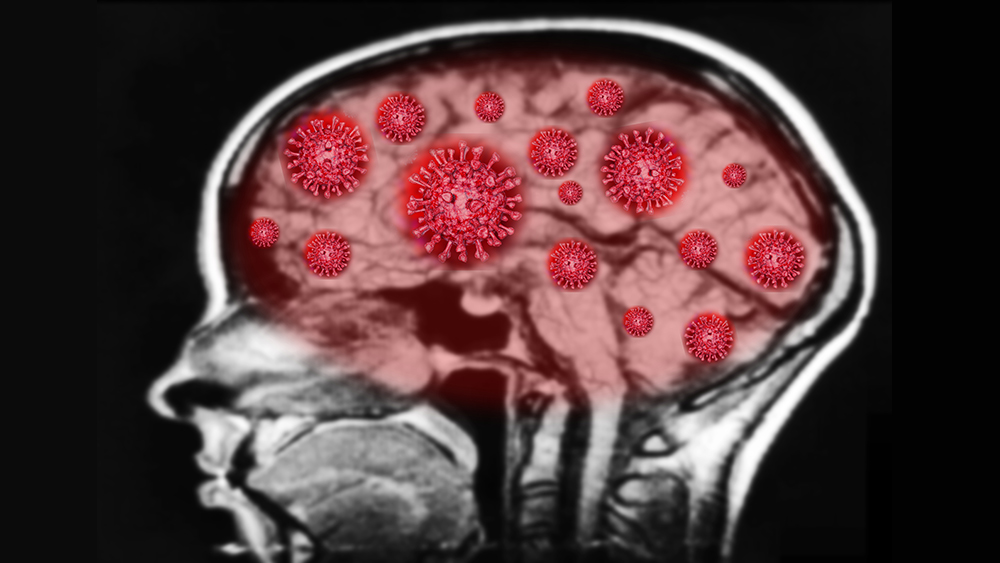Headaches, Memory Problems, and Fatigue
By CHARITÉ - UNIVERSITÄTSMEDIZIN
BERLIN
Headaches, memory problems, and fatigue are just some of the neurological impacts that arise during coronavirus infection and can last well beyond the acute period.
Even early on in the pandemic, researchers
surmised that direct infection of the brain could be the cause.
“We took that as our hypothesis at the start, too. But so far, there has been no clear evidence that the coronavirus can persist in the brain, let alone proliferate,” explains Dr. Helena Radbruch, head of the Chronic Neuroinflammation working group at the Department of Neuropathology at Charité.
“For that, we would have needed to find evidence of intact virus particles in the brain, for example. Instead,
the indications that the coronavirus could infect the brain come from indirect
testing methods, so they aren’t entirely conclusive.”
According to a second hypothesis, the neurological symptoms would instead be a kind of side effect of the strong immune response the body deploys to defend against the virus.
Past studies have produced
indications that this might be the case. The current Charité study now bolsters
this theory with detailed molecular biology and anatomical results from
autopsies.
No Signs of Direct Infection of the Brain
For the study, the team of researchers analyzed various areas of the brain in 21 people who died in hospital settings, typically in an ICU, due to severe coronavirus infection. For comparison, the researchers studied nine patients who died of other causes after treatment in intensive care.
First, they looked to see whether the tissue showed any visible changes
and hunted for any indication of coronavirus. Then they conducted a detailed
analysis of genes and proteins to identify the specific processes that had
taken place inside individual cells.
Like other teams of researchers before them, the Charité scientists found coronavirus genetic material in the brain in some cases. “But we didn’t find neurons infected with SARS-CoV-2,” Radbruch notes.
“We assume
that immune cells absorbed the virus in the body and then traveled to the
brain. They’re still carrying the virus, but it doesn’t infect cells of the
brain. So coronavirus has invaded other cells in the body, but not the brain
itself.”
Brain Reacts to Inflammation in the Body
Still, the researchers did note striking changes in
molecular processes in some cells of the brain in those infected with COVID-19:
For example, the cells ramped up the interferon signaling pathway, which is
typically activated in the course of a viral infection.
“Some neurons evidently react to the inflammation in the rest of the body,” says Prof. Christian Conrad, head of the Intelligent Imaging working group at the Berlin Institute of Health at Charité (BIH) and one of the principal investigators in the study, along with Radbruch.
“This molecular
reaction could be a good explanation for the neurological symptoms we see in
COVID-19 patients. For example, neurotransmitters emitted by these cells in the
brainstem could cause fatigue. That’s because the brainstem is home to groups
of cells that control drive, motivation, and mood.”
The reactive nerve cells were found primarily in what are known as the nuclei of the vagus nerve. These are nerve cells located in the brainstem that extend all the way to organs such as the lungs, intestine, and heart.
“In simplified terms, our interpretation of our data is that the vagus
nerve ‘senses’ the inflammatory response in different organs of the body and
reacts to it in the brainstem – without there being any actual infection of
brain tissue,” Radbruch explains. “Through this mechanism, the inflammation
does spread from the body to the brain in a way, which can disrupt brain
function.”
Limited-Time Reaction
The neurons’ reaction to the inflammation is temporary,
as shown by a comparison of people who died during an acute coronavirus
infection with those who died at least two weeks afterward. The molecular
changes are most evident during the acute infection phase, but they do
normalize again afterward – at least in the vast majority of cases.
“We think it’s possible that if the inflammation becomes
chronic, that could be what causes the neurological symptoms often observed in
long COVID in some people,” Conrad says. To follow up on this suspicion, the
team of researchers is now planning to study the molecular signatures in the
cerebral fluid of long COVID patients in greater detail.
Reference: “Proteomic and transcriptomic profiling of
brainstem, cerebellum and olfactory tissues in early- and late-phase COVID-19”
by Josefine Radke, Jenny Meinhardt, Tom Aschman, Robert Lorenz Chua, Vadim
Farztdinov, Sören Lukassen, Foo Wei Ten, Ekaterina Friebel, Naveed Ishaque,
Jonas Franz, Valerie Helena Huhle, Ronja Mothes, Kristin Peters, Carolina
Thomas, Shirin Schneeberger, Elisa Schumann, Leona Kawelke, Julia Jünger,
Viktor Horst, Simon Streit, Regina von Manitius, Péter Körtvélyessy, Stefan Vielhaber,
Dirk Reinhold, Anja E. Hauser, Anja Osterloh, Philipp Enghard, Jana Ihlow,
Sefer Elezkurtaj, David Horst, Florian Kurth, Marcel A. Müller, Nils C. Gassen,
Julia Melchert, Katharina Jechow, Bernd Timmermann, Camila Fernandez-Zapata,
Chotima Böttcher, Werner Stenzel, Elke Krüger, Markus Landthaler, Emanuel
Wyler, Victor Corman, Christine Stadelmann, Markus Ralser, Roland Eils, Frank
L. Heppner, Michael Mülleder, Christian Conrad and Helena Radbruch, 16 February
2024, Nature Neuroscience.
DOI:
10.1038/s41593-024-01573-y
